High-Temperature Compressive Properties of 3D Printed Polymeric Lattice-Reinforced Cement-Based Materials
Abstract
1. Introduction
2. Experimental Details
2.1. Three-Dimensional Printed Lattice Design
2.2. Cement Base Material
- Water: Zhenjiang tap water was utilized.
- Cement: Ordinary Portland cement PO42.5, produced by Jiangsu Hailin Cement Co., LTD. (Taizhou, China), was used. The main mineral composition of this cement is presented in Table 2. The particle size distribution curve of cement particles is depicted in Figure 1a, with particle sizes concentrated between 3 and 60 μm and an intermediate particle size of 19.9 μm.
- Fly ash: The first-class fly ash produced by Gongyi Bairun Refractory Co., LTD. (Gongyi, China). The particle size distribution of fly ash is shown in Figure 1b.
- Water-reducing agent: Polycarboxylic acid water-reducing agent produced by FOkker Technology Co., LTD. (Suzhou, China). The main performance indicators are summarized in Table 3.
- Standard sand: Chinese ISO standard sand produced by Xiamen ISO Standard Sand Co., LTD. (Xiamen, China) (particle size range: 0.08 mm to 2 mm). Its main mineral composition is tabulated in Table 4.
2.3. Cement-Based Composite Material Mix Ratio
2.4. Specimen Preparation
2.5. Experimental Facilities
3. Test Methods
4. Results and Discussion
4.1. Stress–Strain Curve Analysis
4.2. DIC Analysis
4.3. Fracture Morphology Analysis
- (1)
- Restriction of cement matrix cracking: The 3D printed polymer lattice pillars effectively restrain the lateral deformation of the cement matrix, thereby significantly improving the compressive capacity of the cement-based composites.
- (2)
- Prevention of cement pattern cracking: The lattice material bonds the various phases of the cementing material together, effectively controlling the generation and expansion of cracks within the sample and preventing the formation of large cracks. Consequently, the lattice material effectively fulfills its load-bearing role.
5. Conclusions
Author Contributions
Funding
Institutional Review Board Statement
Data Availability Statement
Conflicts of Interest
References
- Zhou, H.; Zhao, X.; Wang, X.; Song, T.; Liu, H.; Zhang, H. Elevated temperature properties of foam concrete: Experimental study, numerical simulation, and theoretical analysis. Constr. Build. Mater. 2024, 41, 134393. [Google Scholar] [CrossRef]
- Avazzadeh, M.R.; Mirzagoltabar, A.; Yousefpour, H. Effects of exposure to elevated temperatures on the transfer length of pretensioned concrete elements. Structures 2024, 60, 105851. [Google Scholar] [CrossRef]
- Qin, X.; Ma, Q.; Guo, R.; Tan, S. Prediction of Compressive Strength Loss of Normal Concrete after Exposure to High Temperature. Appl. Sci. 2022, 12, 12237. [Google Scholar] [CrossRef]
- Shen, J.; Xu, Q.; Liu, M. Fractal Analysis of Defects in Concrete under Elevated Temperatures. ACI Mater. J. 2022, 119, 19–33. [Google Scholar] [CrossRef]
- Yoo, S.-W.; Choo, J.F. Behavior of CFRP-reinforced concrete columns at elevated temperatures. Constr. Build. Mater. 2022, 358, 129425. [Google Scholar] [CrossRef]
- Zhao, D.; Jia, P.; Gao, H. Review on fatigue behavior of high-strength concrete after high temperature. IOP Conf. Ser. Mater. Sci. Eng. 2017, 207, 012107. [Google Scholar] [CrossRef]
- Akca, A.H.; Özyurt, N. Effects of re-curing on microstructure of concrete after high temperature exposure. Constr. Build. Mater. 2018, 168, 431–441. [Google Scholar] [CrossRef]
- Meng, T.; Chen, Y.; Ying, K.; Jin, X.; Zhan, S. Deterioration mechanism of concrete under long-term elevated temperature in a metallurgic environment: A case study of the Baosteel company. Case Stud. Constr. Mater. 2021, 14, e00503. [Google Scholar] [CrossRef]
- Ning, X.; Liu, T.; Wu, C.; Wang, C. 3D Printing in Construction: Current Status, Implementation Hindrances, and Development Agenda. Adv. Civ. Eng. 2021, 2021, 6665333. [Google Scholar] [CrossRef]
- Yuan, Y. Research Status and Development Trend of 3D Printing Technology. IOP Conf. Ser. Mater. Sci. Eng. 2020, 711, 012014. [Google Scholar] [CrossRef]
- Farina, I.; Fabbrocino, F.; Carpentieri, G.; Modano, M.; Amendola, A.; Goodall, R.; Feo, L.; Fraternali, F. On the reinforcement of cement mortars through 3D printed polymeric and metallic fibers. Compos. Part B Eng. 2016, 90, 76–85. [Google Scholar] [CrossRef]
- Nam, Y.J.; Hwang, Y.K.; Park, J.W.; Lim, Y.M. Feasibility study to control fiber distribution for enhancement of composite properties via three-dimensional printing. Mech. Adv. Mater. Struct. 2019, 26, 465–469. [Google Scholar] [CrossRef]
- Xu, Y.; Šavija, B. Development of strain hardening cementitious composite (SHCC) reinforced with 3D printed polymeric reinforcement: Mechanical properties. Compos. Part B Eng. 2019, 174, 107011. [Google Scholar] [CrossRef]
- Junaid, M.T.; Shweiki, A.; Barakat, S.; Alhalabi, M.; Mostafa, O. lexural characterization and ductility assessment of small-scale mortar beams reinforced with 3D-printed polymers. Structures 2022, 45, 1751–1761. [Google Scholar] [CrossRef]
- Hao, W.; Liu, Y.; Wang, T.; Guo, G.; Chen, H.; Fang, D. Failure Analysis of 3D Printed Glass fiber/PA12 Composite Lattice Structures Using DIC. Compos. Struct. 2019, 225, 111192. [Google Scholar] [CrossRef]
- Xu, Y.; Wan, Z.; Šavija, B. Elevating mechanical performance of cementitious composites with surface-modified 3D-Printed polymeric reinforcements. Dev. Built Environ. 2024, 19, 100522. [Google Scholar] [CrossRef]
- Habib, F.N.; Iovenitti, P.; Masood, S.H.; Nikzad, M. Fabrication of polymeric lattice structures for optimum energy absorption using Multi Jet Fusion technology. Mater. Des. 2018, 155, 86–98. [Google Scholar] [CrossRef]
- Kang, D.; Park, S.; Son, Y.; Yeon, S.; Kim, S.H.; Kim, I. Multi-lattice inner structures for high-strength and light-weight in metal selective laser melting process. Mater. Des. 2019, 175, 107786. [Google Scholar] [CrossRef]
- Kim, H.; Zhao, Y.; Zhao, L. Process-Level Modeling and Simulation for HP’s Multi Jet Fusion 3D Printing Technology. In Proceedings of the 1st International Workshop on CyberPhysical Production Systems, (CPPS), Vienna, Austria, 12 April 2016. [Google Scholar] [CrossRef]
- Ćoralić, A.; Maslo, A.; Manjgo, M.; Raspudić, V.; Manjgo, M.; Vuherer, T. Testing of Mechanical Properties of Polymer PA6—30% Glass Fibres. IOP Conf. Ser. Mater. Sci. Eng. 2023, 1298, 012005. [Google Scholar] [CrossRef]
- Perin, D.; Dorigato, A.; Pegoretti, A. Development of Polyamide 6 (PA6)/Polycaprolactone (PCL) Thermoplastic Self-Healing Polymer Blends for Multifunctional Structural Composites. Appl. Sci. 2022, 12, 12357. [Google Scholar] [CrossRef]
- Hao, W.; Liu, J.; Kanwal, H. Compressive properties of cementitious composites reinforced by 3D printed PA 6 lattice. Polym. Test. 2023, 117, 107811. [Google Scholar] [CrossRef]
- Di, Y.; Wu, X.; Zhao, Z.; Wang, W. xperimental investigation of mechanical, thermal, and flame-etardant property of polyamide 6/phenoxyphosphazene fibers. J. Appl. Polym. Sci. 2020, 137, 48458. [Google Scholar] [CrossRef]
- Vidakis, N.; Petousis, M.; Velidakis, E.; Liebscher, M.; Mechtcherine, V.; Tzounis, L. On the Strain Rate Sensitivity of Fused Filament Fabrication (FFF) Processed PLA, ABS, PETG, PA6, and PP Thermoplastic Polymers. Polymers 2020, 12, 2924. [Google Scholar] [CrossRef]
- Shalchy, F. An Investigation on Interfacial Adhesion Energy Between Polymeric and Cellulose-Based Additives Embedded in C-S-H Gel. Master’s Thesis, Worcester Polytechnic Institute, Worcester, UK, 2016. [Google Scholar]
- Bello, I.; Martínez-Abella, F.; Wardeh, G.; González-Fonteboa, B. Complete stress-strain analysis of masonry prisms under compressive loading-unloading cycles through digital image correlation. Eng. Struct. 2024, 298, 117088. [Google Scholar] [CrossRef]
- Perera, R.; Huerta, M.C.; Baena, M.; Barris, C. Analysis of FRP-Strengthened Reinforced Concrete Beams Using Electromechanical Impedance Technique and Digital Image Correlation System. Sensors 2023, 23, 8933. [Google Scholar] [CrossRef]
- Meng, X.; Pullen, A.; Guo, X.; Yun, X.; Gardner, L. Applications of 3D scanning and digital image correlation in structural experiments. CE/Papers 2023, 6, 1674–1679. [Google Scholar] [CrossRef]
- Dizaji, M.; Alipour, M.; Harris, D. Subsurface damage detection and structural health monitoring using digital image correlation and topology optimization. Eng. Struct. 2020, 230, 111712. [Google Scholar] [CrossRef]
- Leppänen, J.; Johansson, M.; Grassl, P. On the dynamic response of reinforced concrete beams subjected to drop weight impact. Finite Elem. Anal. Des. 2020, 180, 103438. [Google Scholar] [CrossRef]
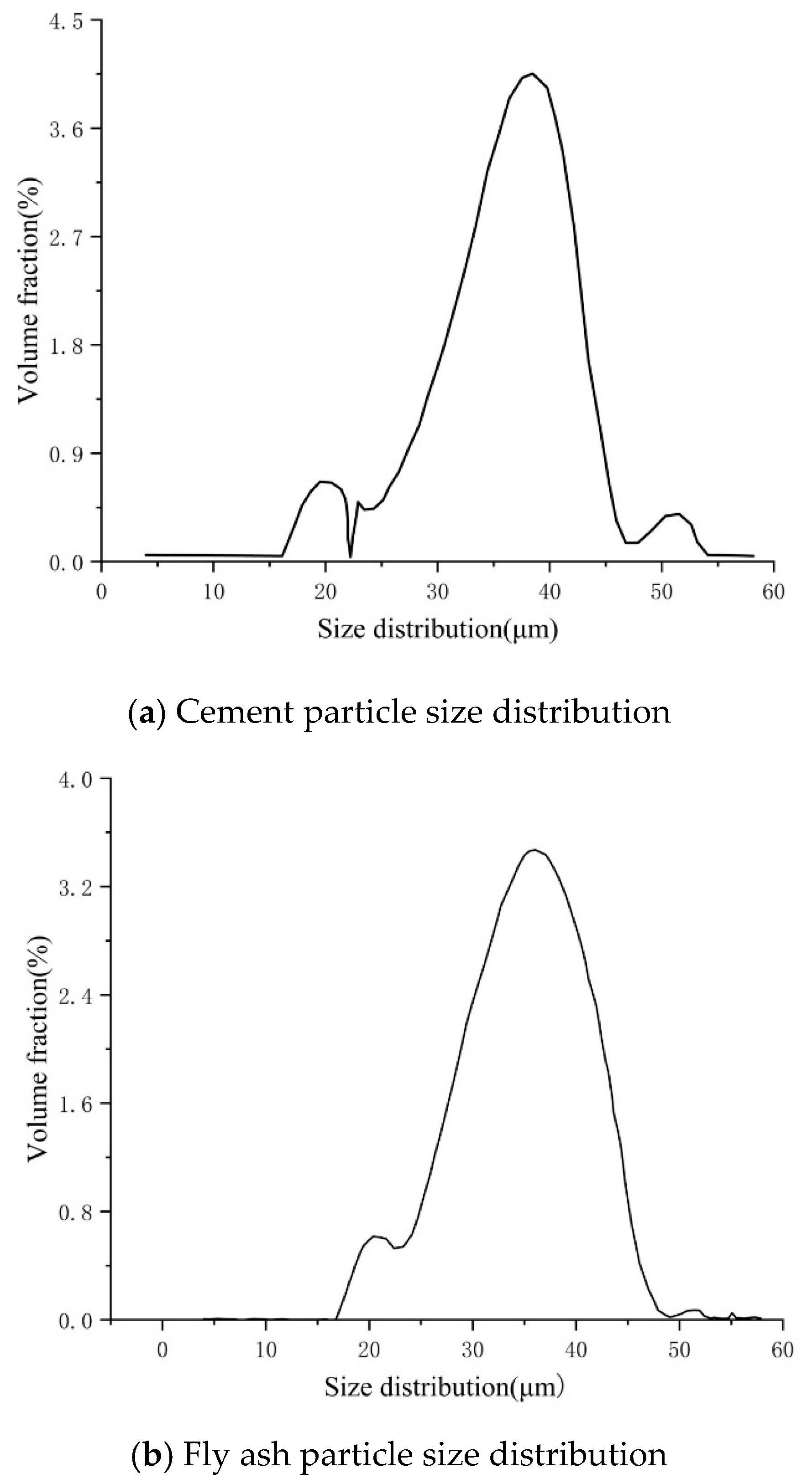


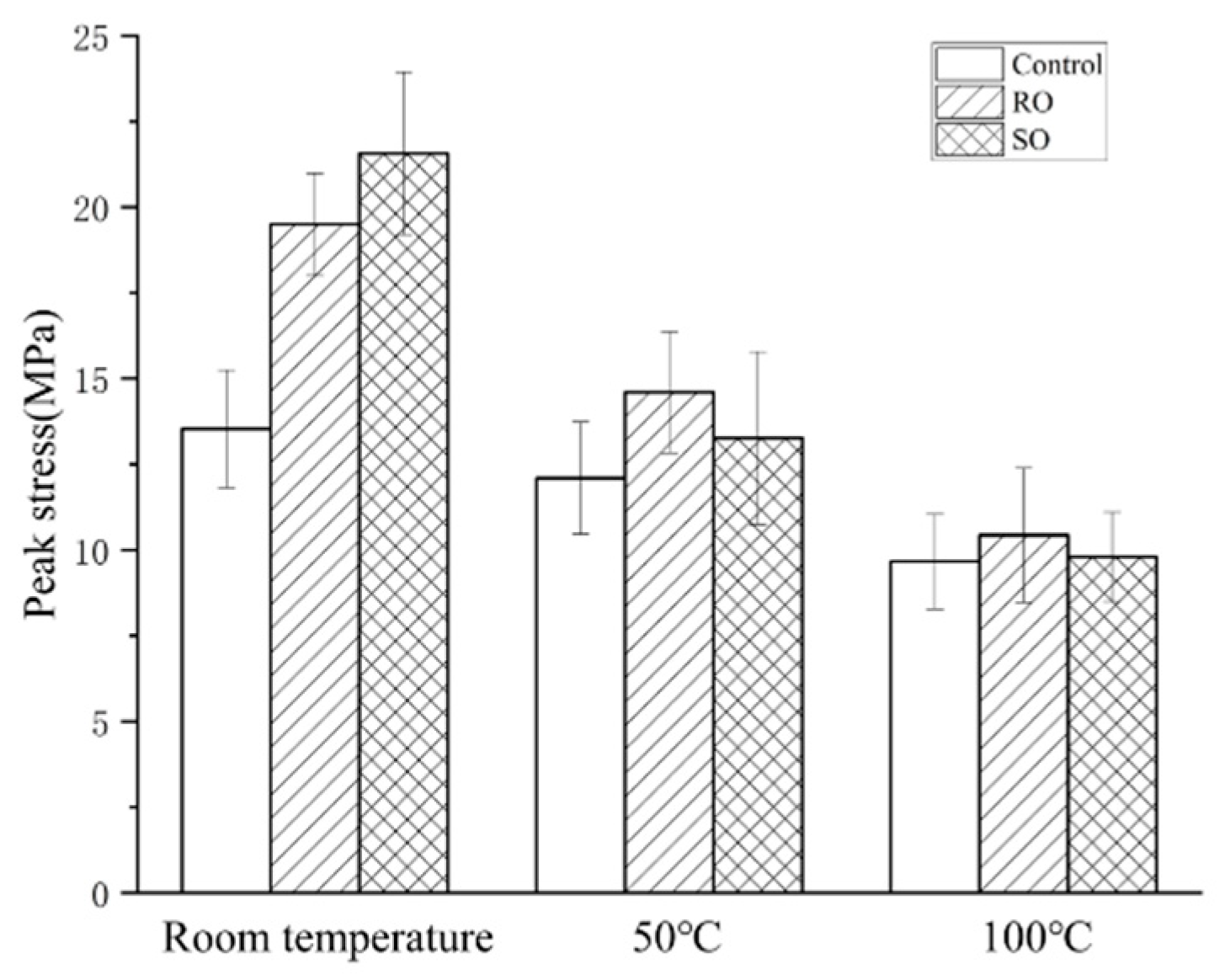
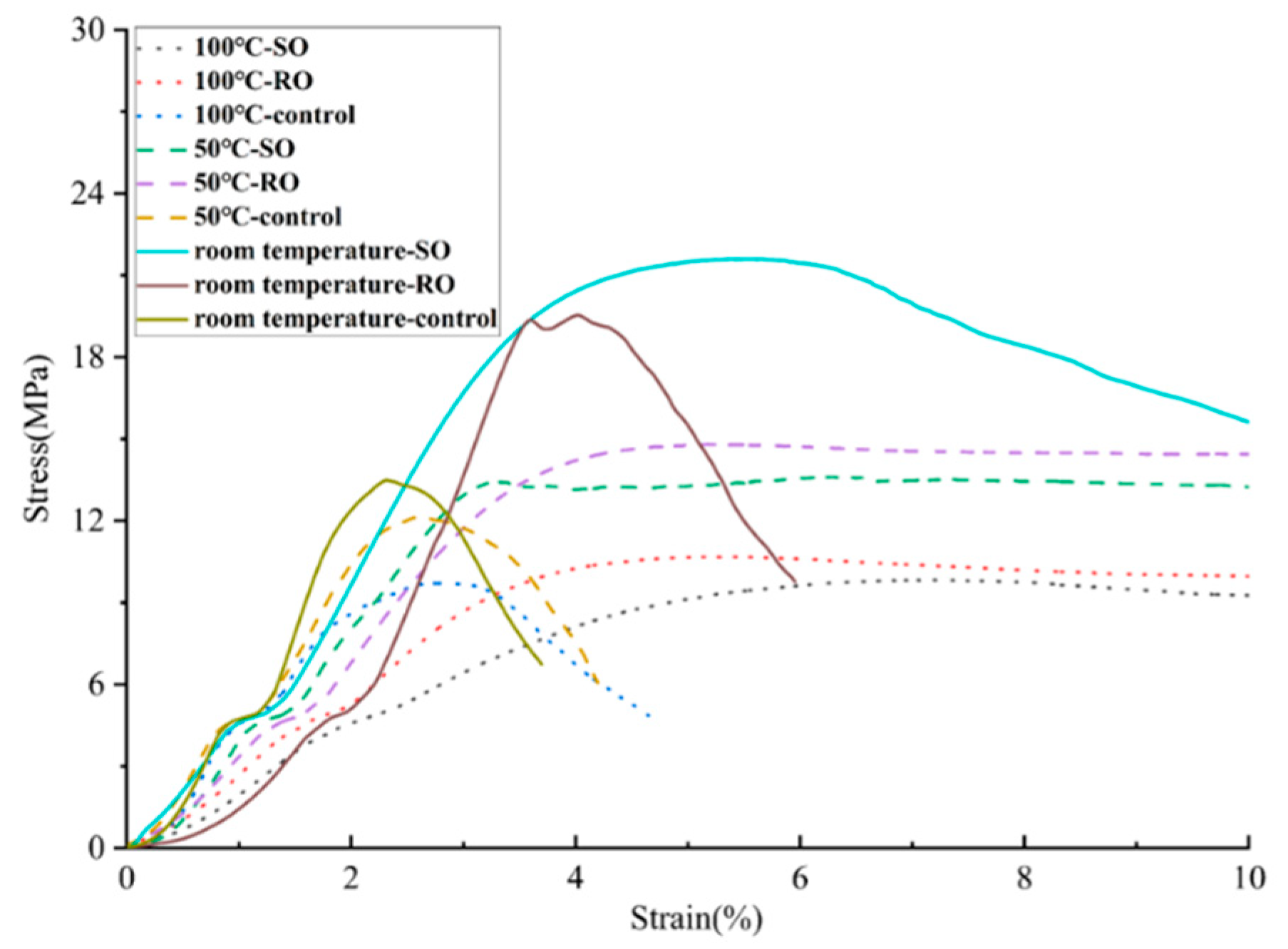

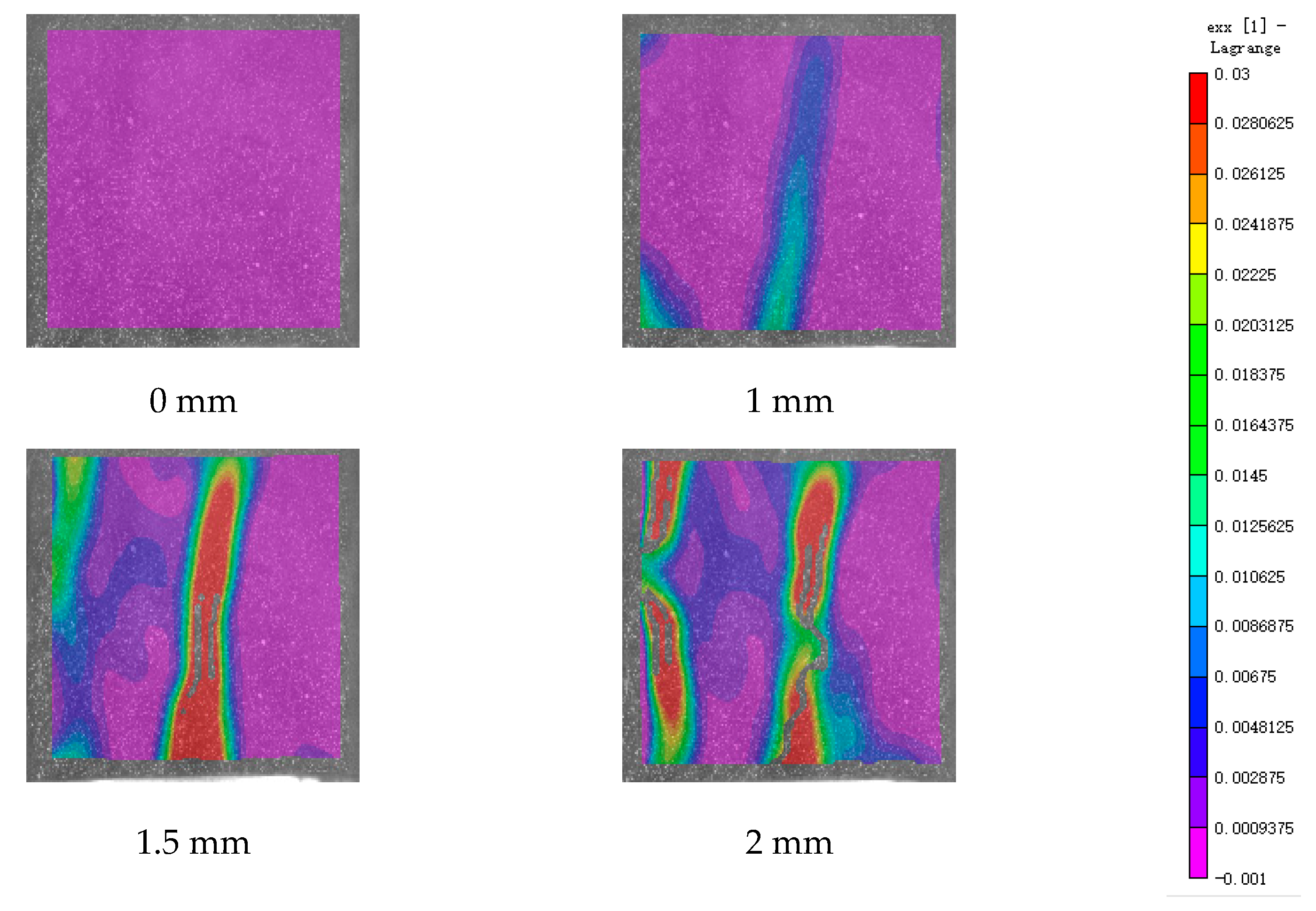
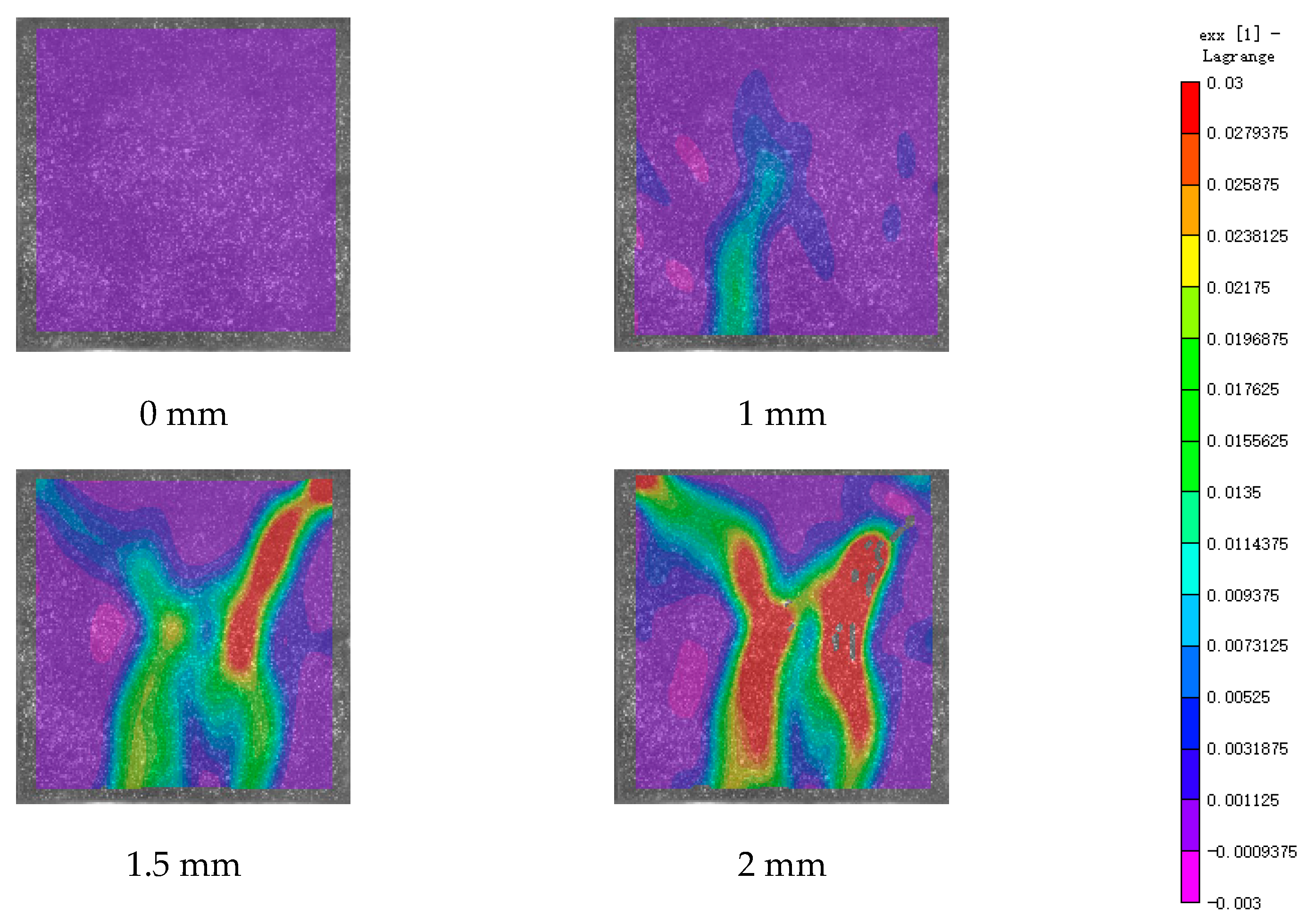


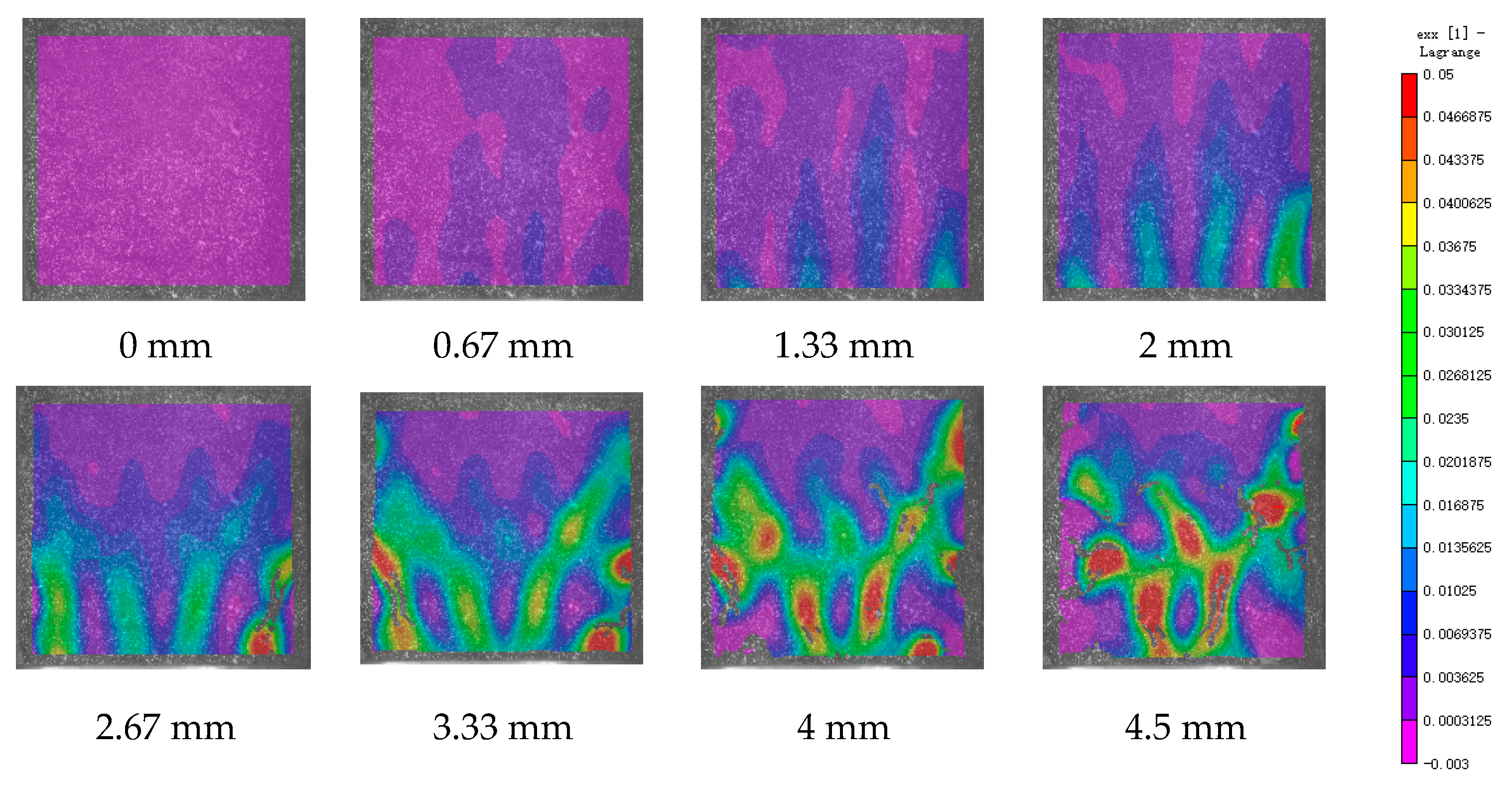


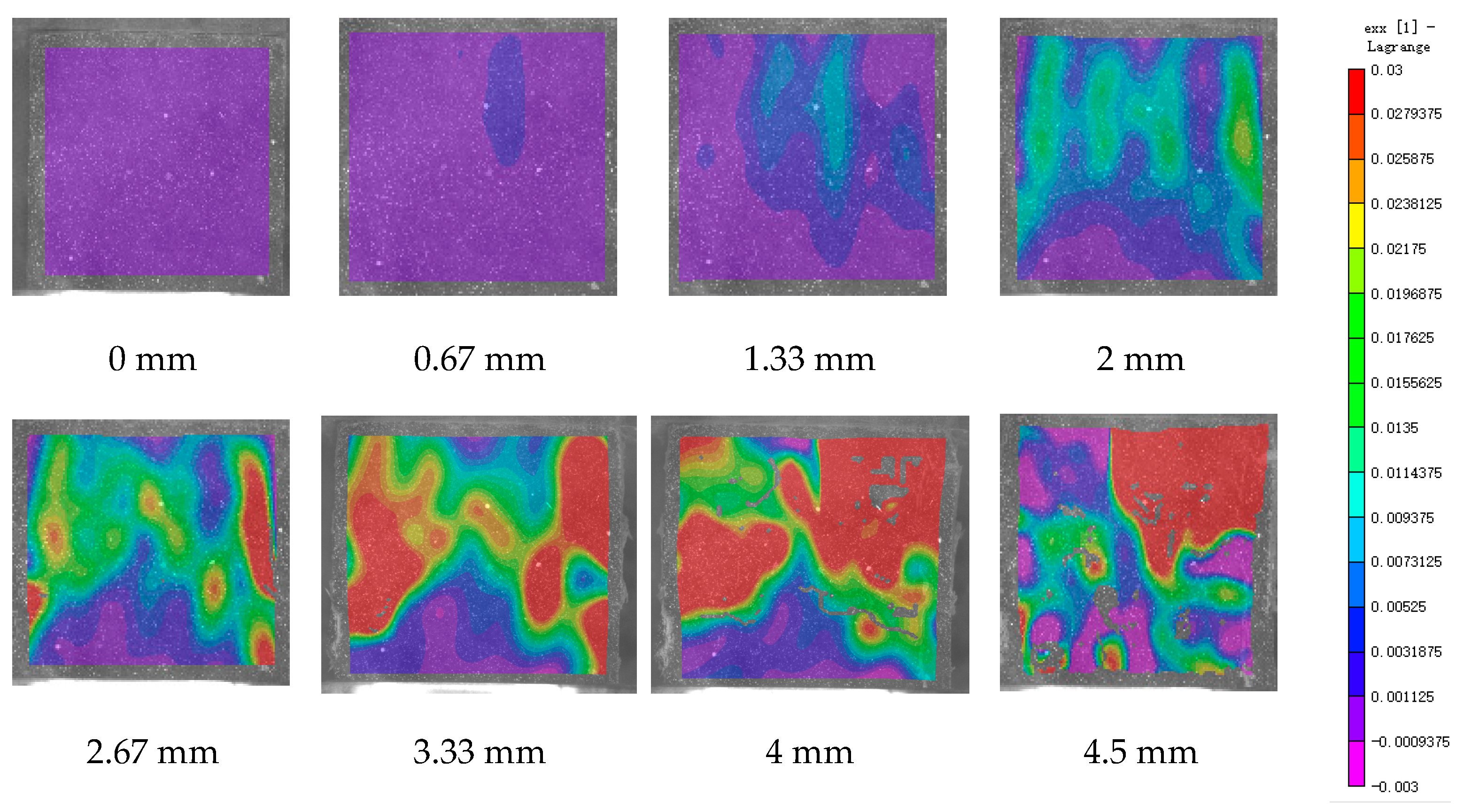
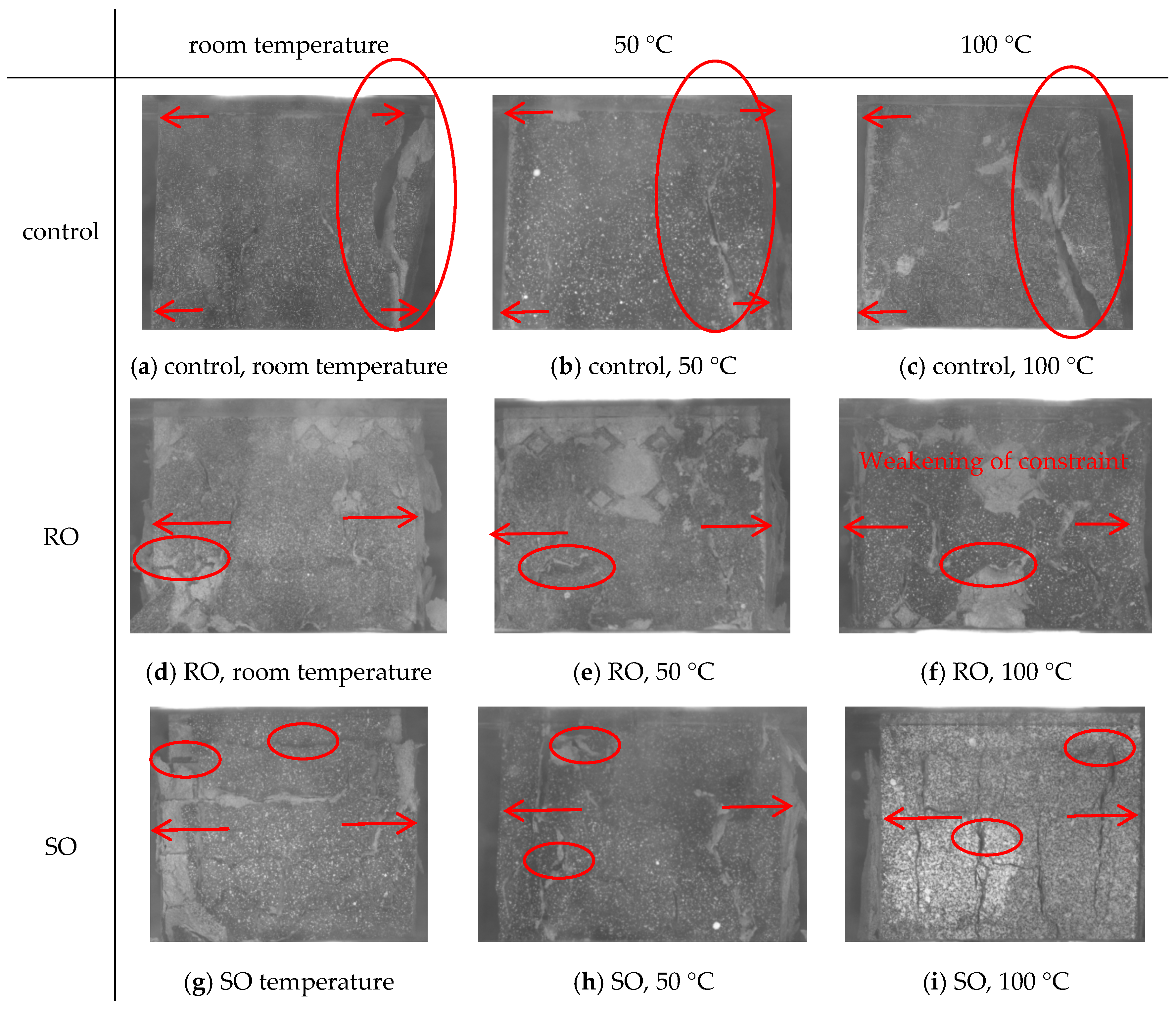
| Serial Number | Lattice Cell | Cellular Structure | Cell Parameter | CAD Structure |
|---|---|---|---|---|
| 1 | RO |  | l = 4.14 mm d = 1.659 mm |  |
| 2 | SO |  | l = 4.14 mm d = 0.979 mm |  |
| Component composition | C3S | C2S | C4AF | C3A | F-MgO | F-CaO |
| Content (%) | 60.5 | 18.1 | 8.9 | 7.4 | 1.8 | 0.9 |
| Air Content | 3.4% |
|---|---|
| Moisture content | 1.7% |
| pH value (23 °C) | 8.0 ± 1.0 |
| Volume density | 600 ± 100 g |
| Sodium sulfate content | 0.79% m3 |
| Cl− content | 0.049% |
| Total alkalinity | 0.77% |
| Powder color | white powder |
| Water reduction rate of cement mortar | ≥30% |
| Recommended dosage | 0.15–0.3 |
| SO2 | >98% | Loss on ignition | <0.47% |
| Moisture content | ≤0.18% | Cl− content | ≤0.007% |
| Sediment content | ≤0.18% | Other mineral content | ≤0.002% |
| Cement | Fly Ash | Standard Sand (Particle Size of <0.63 mm) | Water-Reducing Agent | Water |
|---|---|---|---|---|
| 410 g | 40 g | 1350 g | 1.35 g | 280 g |
Disclaimer/Publisher’s Note: The statements, opinions and data contained in all publications are solely those of the individual author(s) and contributor(s) and not of MDPI and/or the editor(s). MDPI and/or the editor(s) disclaim responsibility for any injury to people or property resulting from any ideas, methods, instructions or products referred to in the content. |
© 2025 by the authors. Licensee MDPI, Basel, Switzerland. This article is an open access article distributed under the terms and conditions of the Creative Commons Attribution (CC BY) license (https://creativecommons.org/licenses/by/4.0/).
Share and Cite
Gu, Y.; Qiao, J.; Liu, J.; Hao, W.; Tang, C. High-Temperature Compressive Properties of 3D Printed Polymeric Lattice-Reinforced Cement-Based Materials. Polymers 2025, 17, 802. https://doi.org/10.3390/polym17060802
Gu Y, Qiao J, Liu J, Hao W, Tang C. High-Temperature Compressive Properties of 3D Printed Polymeric Lattice-Reinforced Cement-Based Materials. Polymers. 2025; 17(6):802. https://doi.org/10.3390/polym17060802
Chicago/Turabian StyleGu, Yawen, Jing Qiao, Junwei Liu, Wenfeng Hao, and Can Tang. 2025. "High-Temperature Compressive Properties of 3D Printed Polymeric Lattice-Reinforced Cement-Based Materials" Polymers 17, no. 6: 802. https://doi.org/10.3390/polym17060802
APA StyleGu, Y., Qiao, J., Liu, J., Hao, W., & Tang, C. (2025). High-Temperature Compressive Properties of 3D Printed Polymeric Lattice-Reinforced Cement-Based Materials. Polymers, 17(6), 802. https://doi.org/10.3390/polym17060802







